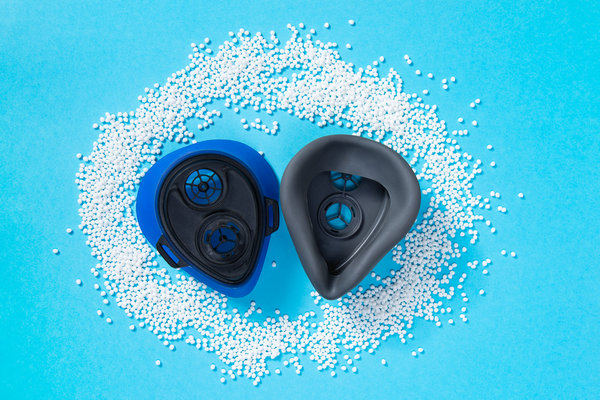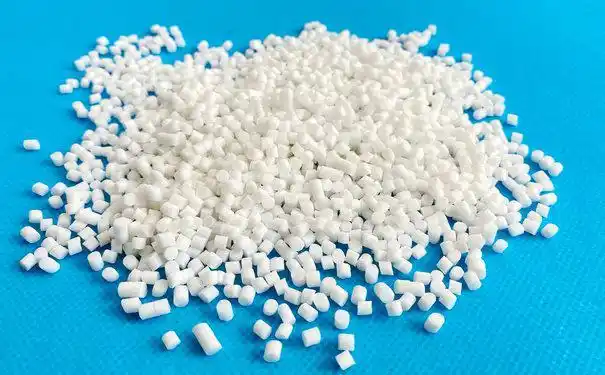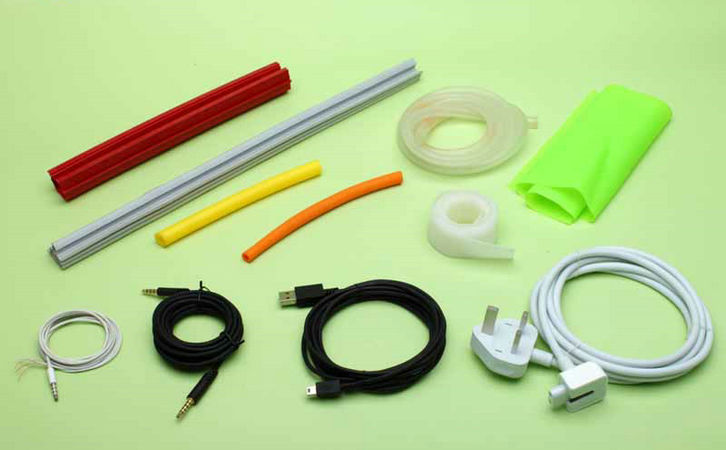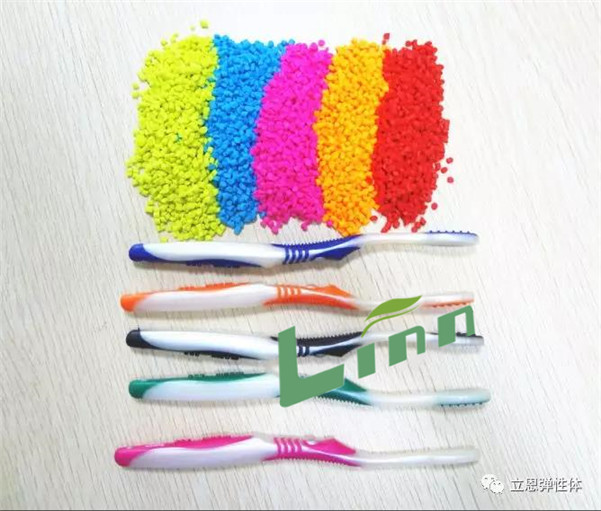As a plastics engineer with over a decade of experience in injection molding, I’ve spent countless hours troubleshooting issues on the factory floor, particularly with thermoplastic elastomers (TPEs). TPEs are a dream material for their rubber-like flexibility and versatility, used in everything from soft grips to medical seals. But one frustration I’ve encountered—and I hear about often from colleagues and clients—is: What do you do when TPE sticks to the mold during injection molding? This issue can halt production, damage parts, or even ruin expensive molds. Drawing from my own battles with sticky TPEs, I’ll explain why this happens, how to fix it, and how to prevent it in the future, all while sharing practical tips to keep your molding process running smoothly.

Why TPE Sticks to the Mold
TPEs, with their soft, elastic nature, are more prone to sticking than rigid plastics like ABS or polycarbonate. When TPE adheres to the mold, it can tear during ejection, leave residue, or cause defects, leading to scrapped parts and downtime. I’ve seen this issue grind production to a halt, like when a batch of TPE gaskets tore because they clung to the mold cavity. The root causes typically boil down to material properties, mold design, processing conditions, or mold maintenance. Below, I’ll dive into each cause and share solutions that have worked for me in real-world scenarios.
Causes of TPE Sticking and How to Fix Them
Let’s break down the main reasons TPE sticks to the mold and explore actionable fixes for each.
1. Material Properties
TPEs, especially softer grades (e.g., 20-60 Shore A), have a tacky surface that naturally adheres to mold walls. Some TPEs, like styrenic block copolymers (SBCs) or thermoplastic polyurethanes (TPUs), are stickier due to their chemical makeup or additives like plasticizers. I once worked on a TPE plug project where the material’s high tackiness caused it to stick despite a polished mold.
Fixes:
Switch to a Less Sticky Grade: If possible, choose a TPE with lower tackiness, such as a TPV (thermoplastic vulcanizate) or a TPE formulated for easy release. I’ve had success with TPVs for parts requiring smooth ejection.
Add Release Additives: Incorporate slip agents like silicone or PTFE (0.5-2% by weight) into the TPE compound to reduce surface tack. For a medical seal project, adding 1% silicone improved release without affecting biocompatibility.
Dry the Material: TPEs are hygroscopic, and excess moisture can increase stickiness. I dry TPE pellets at 80-100°C for 2-4 hours to ensure moisture content is below 0.02%.
My Tip: Consult your TPE supplier for grades with built-in release properties tailored to your application.

2. Mold Design Issues
Mold design plays a huge role in part release. TPEs require specific features to prevent sticking, and poorly designed molds can make the problem worse. I’ve seen molds with insufficient draft angles or rough surfaces cause TPE parts to cling stubbornly.
Fixes:
Increase Draft Angles: TPEs need 1-3° draft angles (or more for deep cavities) to ease ejection. For a TPE grip mold, increasing the draft from 0.5° to 2° eliminated sticking issues.
Polish Mold Surfaces: A mirror-polished mold surface (SPI A1 or A2 finish) reduces friction and sticking. I’ve also used chrome plating or PTFE coatings for stubborn molds.
Improve Venting: Trapped air can force TPE against mold walls, increasing adhesion. I add 0.01-0.03 mm vents to release air without causing flash.
Optimize Ejection: Use ejector pins, air blasts, or stripper plates to ensure even part release. For a TPE plug mold, adding air-assisted ejection solved sticking in tight cavities.
My Tip: Work with your mold maker to incorporate generous draft angles and polished surfaces from the start.
3. Processing Conditions
Incorrect molding parameters can make TPE stickier or harder to eject. I’ve seen high melt temperatures or insufficient cooling cause parts to adhere, especially in high-volume production.
Fixes:
Lower Melt Temperature: High temperatures (above 220°C) can degrade TPE, increasing tackiness. I set melt temperatures at 160-200°C for SEBS-based TPEs and 180-210°C for TPUs, adjusting based on flow.
Reduce Mold Temperature: A cooler mold (e.g., 20-30°C) helps TPE solidify faster, reducing sticking. For a TPE phone case, lowering the mold temperature from 40°C to 25°C improved release.
Adjust Cooling Time: Insufficient cooling leaves parts soft and sticky. I extend cooling time to 15-30 seconds, depending on part thickness, to ensure proper solidification.
Optimize Injection Pressure: Excessive pressure (>100 MPa) can overpack the mold, forcing TPE into micro-crevices. I use 50-80 MPa and a multi-stage pressure profile to minimize sticking.
My Tip: Run trial molds to fine-tune temperature and cooling settings, starting with the TPE manufacturer’s recommendations.

4. Mold Maintenance and Release Agents
A dirty or worn mold can exacerbate sticking, as can improper use of release agents. I once dealt with a mold caked with TPE residue, which caused every part to stick until we cleaned it thoroughly.
Fixes:
Clean the Mold: Remove TPE residue with a non-abrasive cleaner like isopropyl alcohol or specialized mold cleaners. I clean molds after every 500-1000 cycles or when sticking starts.
Apply Release Agents: Use silicone-free mold release agents (e.g., Stoner or Slide) to reduce sticking without contaminating parts. I apply a thin coat every 50-100 cycles, wiping off excess to avoid buildup.
Inspect Mold Wear: Worn or scratched mold surfaces increase adhesion. I check molds regularly and re-polish or re-coat as needed.
My Tip: Keep a maintenance log to track cleaning and release agent application schedules.
| Cause | Why It Causes Sticking | Fix | Key Action |
|---|---|---|---|
| Material Properties | Tacky TPE adheres to mold | Use low-tack grades, add slip agents | Dry TPE to <0.02% moisture |
| Mold Design | Insufficient draft or rough surfaces | Increase draft (1-3°), polish mold | Add vents (0.01-0.03 mm) |
| Processing Conditions | High temps or poor cooling increase tack | Lower melt (160-200°C), cool mold (20-30°C) | Extend cooling (15-30 seconds) |
| Mold Maintenance | Residue or wear increases adhesion | Clean regularly, use release agents | Apply silicone-free agent every 50-100 cycles |
Step-by-Step Guide to Address TPE Sticking
If TPE is already sticking to your mold, here’s my proven approach to resolve it:
1. Stop Production and Inspect
Pause the machine to avoid damaging the mold or parts. Check for:
TPE Residue: Look for buildup in cavities or on ejector pins.
Mold Damage: Inspect for scratches or wear that could increase adhesion.
Part Defects: Torn or deformed parts may indicate processing issues.

2. Clean the Mold
Use a non-abrasive cleaner like isopropyl alcohol or a mold-specific solvent to remove TPE residue. I use a soft brush for tight areas.
For stubborn buildup, gently scrape with a plastic scraper to avoid scratching the mold.
Rinse with water if the cleaner requires it, then dry thoroughly to prevent corrosion.
3. Apply a Release Agent
Spray a thin layer of silicone-free mold release agent (e.g., Stoner A320) onto the mold surface.
Wipe off excess with a clean cloth to prevent transfer to parts, which could affect bonding in overmolding.
Reapply every 50-100 cycles or as needed, depending on sticking severity.
4. Adjust Processing Parameters
Lower Melt Temperature: Reduce by 5-10°C if above the recommended range (e.g., from 210°C to 200°C for SEBS).
Cool Mold: Set mold temperature to 20-25°C for faster solidification.
Extend Cooling Time: Add 5-10 seconds to ensure parts are solid before ejection.
Reduce Injection Pressure: Lower by 10-20 MPa to avoid overpacking.
5. Check Material Condition
Verify TPE is properly dried (80-100°C for 2-4 hours). I use a moisture analyzer to confirm <0.02% moisture.
If the TPE grade is too tacky, consider switching to a low-tack alternative or adding 0.5-1% slip agent with supplier approval.

6. Modify Mold if Needed
If sticking persists, inspect draft angles and surface finish. Increase draft to 2-3° or polish to an A1 finish if budget allows.
Add or deepen vents (0.01-0.03 mm) to reduce air trapping.
Consider applying a PTFE or chrome coating for long-term release improvement.
7. Test and Monitor
Run a trial batch with adjusted settings and monitor for sticking.
Keep a log of parameters (e.g., temperature, pressure, cooling time) to replicate successful runs.
Schedule regular mold cleaning and inspections to prevent recurrence.
Preventing TPE Sticking in Future Runs
To avoid sticking issues long-term, here’s what I do before starting a new TPE molding project:
Select the Right TPE: Choose a grade with low tackiness and good release properties, like TPVs or modified SBCs. I always request supplier samples for testing.
Optimize Mold Design: Ensure 1-3° draft angles, polished surfaces, and adequate venting from the design phase.
Use Proper Equipment: Equip the machine with a low-shear screw (compression ratio 2:1-2.5:1) to minimize TPE degradation.
Establish Maintenance Routines: Clean molds every 500-1000 cycles, apply release agents as needed, and inspect for wear regularly.
Train Operators: Educate staff on TPE handling, mold cleaning, and parameter adjustments to catch issues early.

Common Sticking-Related Defects and Solutions
Sticking can cause secondary defects. Here are ones I’ve encountered and how to fix them:
Torn Parts: Result from excessive adhesion or insufficient draft. Increase draft to 2-3° and apply a release agent.
Surface Imperfections: Caused by residue or overpacking. Clean the mold and reduce injection pressure by 10 MPa.
Warping: Due to uneven cooling or sticking stress. Lower mold temperature to 20-25°C and extend cooling time by 5 seconds.
Ejector Pin Marks: From excessive force to remove stuck parts. Use air-assisted ejection or increase draft angles.
My Experience: Tackling Sticky TPE Challenges
One of my toughest projects was molding TPE seals for automotive connectors. The soft 30 Shore A TPE stuck to the mold so badly that half the parts tore during ejection. We cleaned the mold, applied a silicone-free release agent, and lowered the melt temperature from 210°C to 190°C. Adding 2° draft angles and polishing the mold to an A2 finish finally solved the issue, and production ran smoothly for thousands of cycles. Another time, a TPE phone case project had sticking problems due to moisture in the material. Drying the TPE at 90°C for 4 hours eliminated the issue, and we added a dehumidifying dryer to the process.
Dealing with TPE sticking to the mold can be frustrating, but with the right approach—cleaning, adjusting parameters, and optimizing mold design—you can get back to producing high-quality parts. Hopefully, my insights give you a clear path to solve and prevent this issue. If you’re facing a specific sticking problem or planning a TPE project, drop a comment—I’d love to share more tips from my years in the industry!

Frequently Asked Questions
Q1: Why does my TPE stick to the mold even with a release agent?
A: The TPE may be too tacky, the mold may lack sufficient draft angles, or processing temperatures may be too high. Try a low-tack TPE grade, increase draft to 2-3°, and lower melt temperature by 5-10°C.
Q2: Can I use silicone-based release agents for TPE molds?
A: Silicone-based agents can work but may contaminate parts, affecting bonding in overmolding. I prefer silicone-free agents like Stoner A320 for cleaner results.
Q3: How often should I clean the mold to prevent TPE sticking?
A: Clean every 500-1000 cycles or when residue appears. Apply a release agent every 50-100 cycles, depending on sticking severity.
Q4: Will polishing the mold always solve TPE sticking issues?
A: Polishing helps significantly, but it must be paired with proper draft angles, venting, and processing conditions. For stubborn cases, consider a PTFE or chrome coating.





